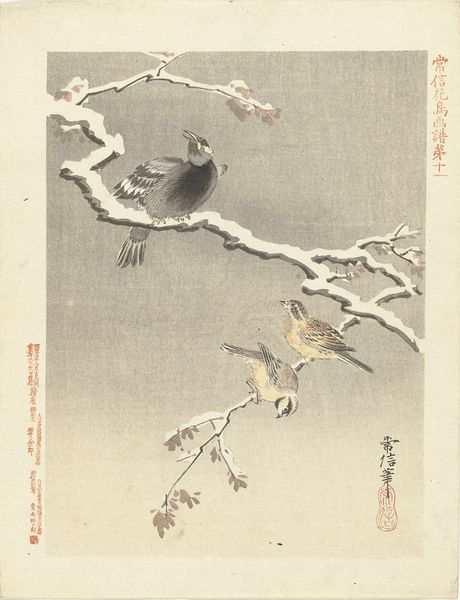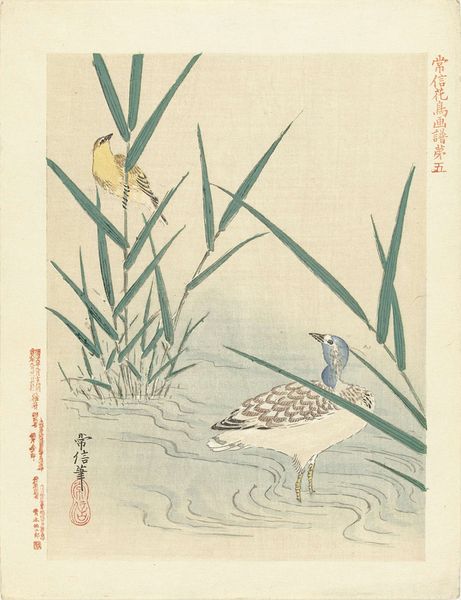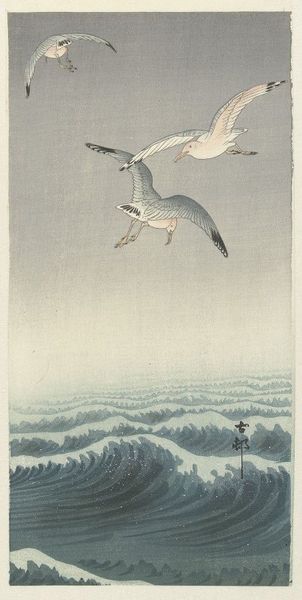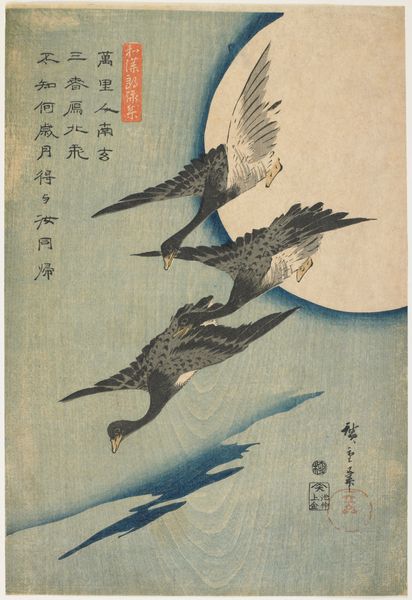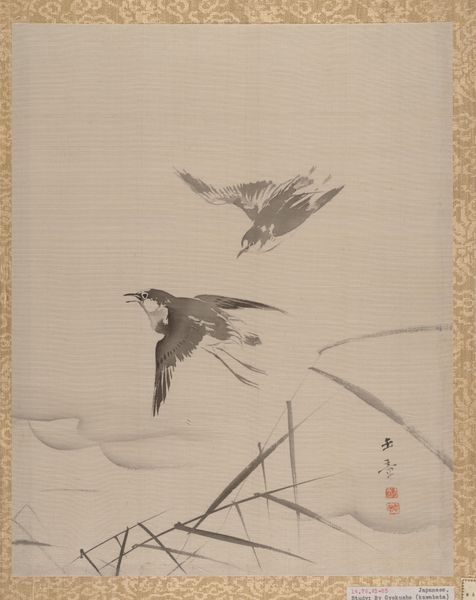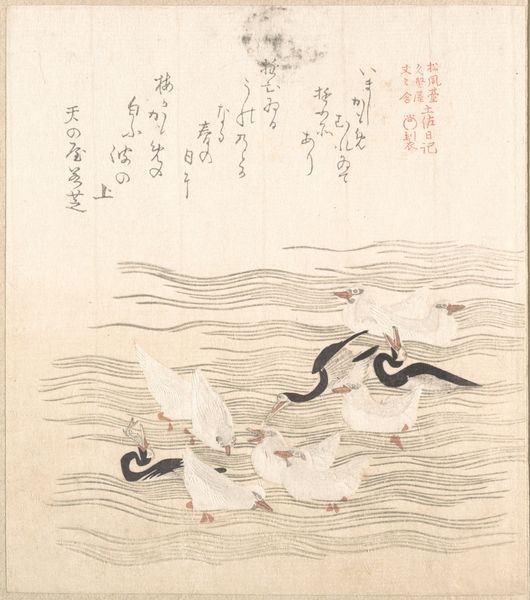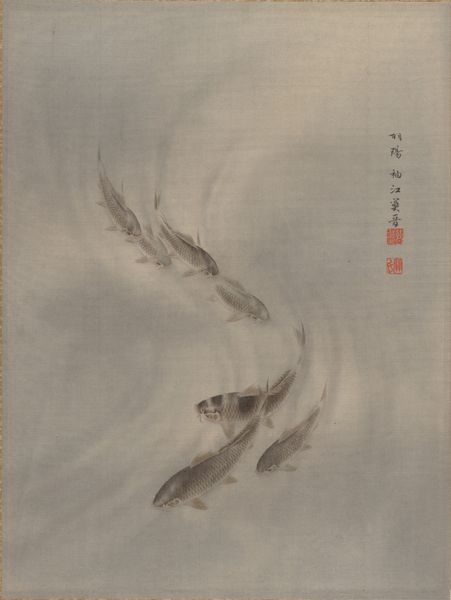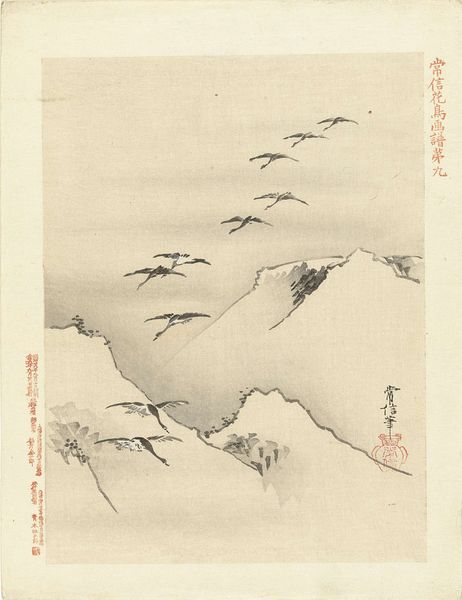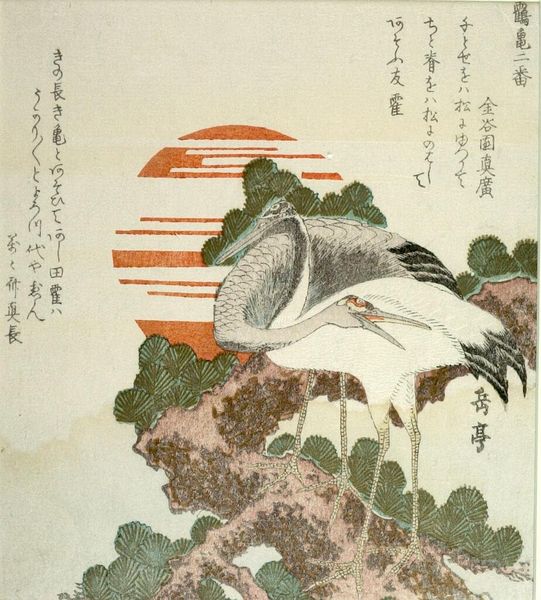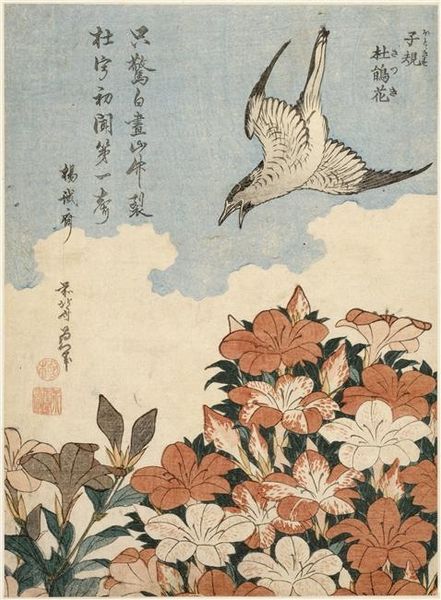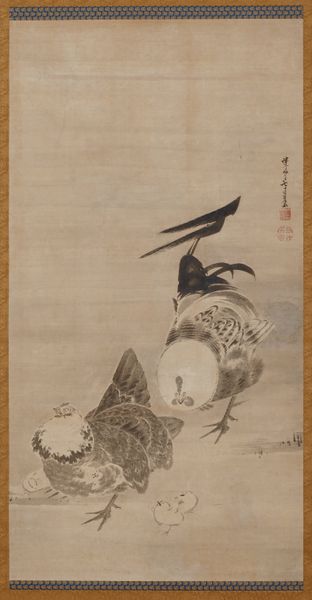
Dimensions: height 271 mm, width 209 mm
Copyright: Rijks Museum: Open Domain
Editor: Here we have Kano Tsunenobu's "Twee Zwaluwen," made sometime between 1893 and 1899. It's a lovely watercolor that gives off a very peaceful, almost ethereal vibe with the mountains fading into the misty background. What strikes you most about this piece? Curator: The social context in which these images circulate is vital. These paintings, particularly within the *ukiyo-e* tradition, were increasingly being consumed by a Western audience. The composition is traditional, drawing from earlier Japanese landscape conventions, but notice how the softness of the watercolor lends itself to Western tastes. How do you think the presentation of "Japanese-ness" in this piece contributes to its reception and marketability, both then and now? Editor: That’s a really interesting point. It's like it’s designed to be exotic yet accessible. Did the rise of art institutions and galleries in the West influence the subject matter at all? Were artists like Tsunenobu tailoring their art to appeal to those markets? Curator: Precisely. The burgeoning art market definitely played a significant role. What symbols, themes, or historical connections can you see in the image that speak to broader sociopolitical conversations, in the depicted content as well as in its reception, and therefore it's valuation on a western market? How does this piece operate as both art and commodity? Editor: I guess the birds themselves could be symbols of freedom, something that would resonate in any culture, adding to its appeal… and the traditional style also romanticizes an idea of old Japan. It really makes you think about how art is shaped not just by the artist but by the audience and the market too. Curator: Absolutely. Examining these historical influences offers a greater comprehension of the art.
Comments
No comments
Be the first to comment and join the conversation on the ultimate creative platform.

